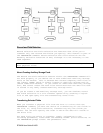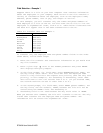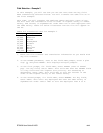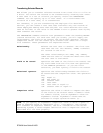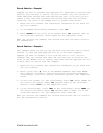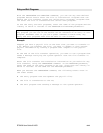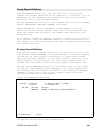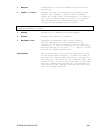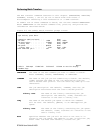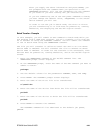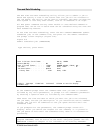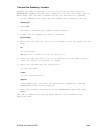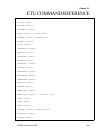
ETU400 User Guide 011603
9-20
Saving Request Definitions
Some ETU commands allow you to save the definition of the current
request. The request definition is the completed, or filled-out, list of
parameters for the command you are running. You can re-use the saved
definition later to run the same command.
The ETU commands that allow you to save request definitions are PCFROMPC,
PCTOPC, PWRFROM3XB, PWRTO3XB, FROM3XB, and TO3XB.
These commands all contain a parameter called SAVRQS. To save the
definition for the current request, enter *YES for this parameter and
enter the request name you desire. The request name can be up to ten
characters long.
As an example, suppose you regularly transfer a weekly sales file from a
PC to the host, using the PWRTO3XB command. By saving the definition of
that request, you can avoid re-keying the same information each time that
you transfer the file.
Re-using Request Definitions
Once you have saved a request definition, you can re-use it at any time,
with the ETU command VWSAVRQS (view saved requests). Using this command,
you can run the saved requests interactively or submit them to batch
(only the ETU power commands). You can also change or delete any of the
saved requests. You may work with only those saved requests that you
created. Only the security office can view requests from another user.
The ETU command VWSAVRQS displays all the requests that you have saved.
To view the saved requests, enter VWSAVRQS on the AS/400 command line.
This displays only the requests saved by the user running the VWSAVRQS
command. To take action on one or more requests, enter one of the
following options next to the requests.
Figure 9-3 VWSAVRQS prompt screen
1/06/03 View saved request definitions
Options: 1= Execute 2= Submit to batch 3= Change
4= Delete 5= Extended view
Rqs name Cmd name Cmd parms
PWRTO3XB QFNAME1('c:\bootlog.txt') MICLST(NLRISCLIF...
F1= Unfold/Fold F3= Exit
The options and the actions they represent are:



